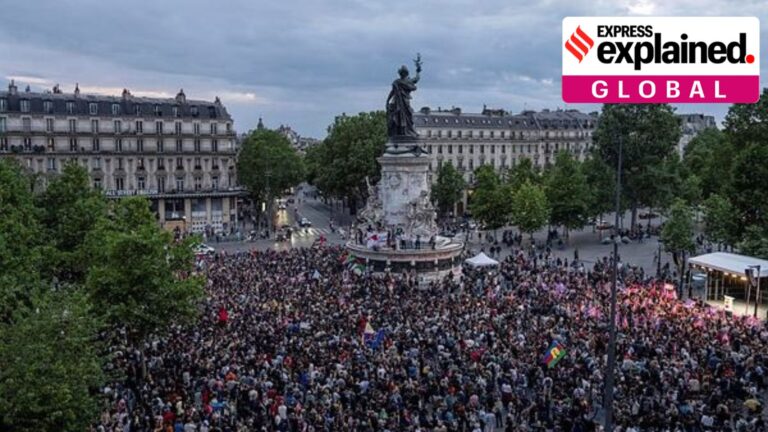At least 200 candidates withdrew after the far-right Rally National (RN) party took the lead in the first round of France’s national elections on June 30, sparking large-scale protests in several French cities.
If the RN wins the second round of voting on July 7, France will have its first far-right majority government since World War II and its fourth coexistence government, in which a party or coalition opposed to the president controls parliament.
Why did so many candidates drop out, and how will it affect the election outcome?
How French elections work
At the heart of the above question is the electoral system in France. France has a bicameral parliament: the Senate, which is the upper house, and the National Assembly, which is the lower house.
The election, to elect members of parliament for 577 seats, will be held in two rounds.

In the first round, voting took place in all 577 constituencies. Candidates who received at least 50% of the total votes and at least 25% of the voters in their constituency were elected in direct elections. After the June 30 vote, only 76 candidates, almost all from far-right and far-left parties, had made it into the National Assembly.
This means that the remaining 506 seats will be contested in a runoff election on July 7th. The runoff election will feature the top two candidates and a candidate who receives the support of at least 12.5% of registered voters (not ballots cast). The candidate with the most votes wins.
Tactical withdrawal

Three main factions are dominating the French election: Marine Le Pen’s far-right RN, President Emmanuel Macron’s centrist coalition, and the left-wing New Popular Front (NFP) coalition. Of the three, President Macron’s coalition (as expected) performed the worst in the first round, while the far-right RN won the most votes.
As a result, Macron and his allies, as well as the left, have launched a campaign to stop the RN from taking power. Preventing far-right parties from taking power appears to be a top priority for both the centre-right and left-wing coalitions, despite their ideological differences.
“In the face of the National Rally, the time has come for a broad, clear democratic-republican coalition for the second round,” Macron said on June 30. Jean-Luc Mélenchon of the left-wing party Indefatigable France, the NFP’s de facto president, made a similar call after the first-round results were announced.
Thus, by July 2, the deadline for candidate registration for the second round, 218 candidates had withdrawn from the parliamentary elections, of which 130 belonged to the NFP and 82 represented Macron’s Ensemble coalition, France24 reported.
The logic behind this is to consolidate the left and centre votes against the RN in the second round.
Before the withdrawal, there were more than 300 constituencies where a three-way race between far-right, center and left candidates was scheduled for the second round. That number has now fallen to fewer than 100.
At the very least, the centre and left parties hope that unity between the two can prevent the RN from winning a landslide victory.


